evgenyatamanenko/iStock/GettyImages
Just because your neighbor isn't home to lend you a cup of sugar doesn't mean you have to give up on the idea of baking a cake. Syrups, artificial sweeteners and honey can stand in for the white stuff. When using a sugar substitute, you might have to alter your baking methods and amounts of other ingredients, and even with these adjustments, a sugar-less cake will have a different texture and flavor.
Role of Sugar
Sugar adds sweetness to your cake, of course, but it also plays a chemical role in making your cake a show-stopper. Shirley Corriher, in her book "Cookwise," notes that sugar tenderizes and moisturizes cake, just as fats do. By binding to the individual proteins in flour, sugar prevents these flour proteins from sticking to one another, which creates a tough, chewy and glutenous texture. This process also enables the cake to rise and creates an airy texture.
Honey and Agave
When you use honey to replace sugar in a cake, you'll end up with a product that stays moist for longer. If the cake recipe calls for a cup of sugar or less, you can replace it with equal amounts of honey. For recipes that call for more than 1 cup of sugar, use 2/3- to 3/4-cup of honey for each cup of sugar, depending on the desired level of sweetness. The same rules apply for subbing in agave nectar for sugar. When using either sweetener, lower the oven temperature by about 25 degrees because cakes made with honey and agave brown faster. If you are using more than 1 cup of honey or agave, you'll also need to reduce one of the liquid ingredients by about 1/4 cup for every cup of syrup used. When using honey, add a pinch of baking soda to the batter to neutralize the syrup's natural acidity. Both honey and agave may change the flavor of your cake, especially if you choose dark versions of these sweeteners.
Other Liquid Sweeteners
Corn syrup, fruit syrup, maple syrup and brown rice syrup are possible substitutes for sugar. Corn syrup is a little less sweet than sugar and browns faster, which may or may not be an advantage, depending on your desired cake results. Fruit syrups and brown rice syrup tend to be equal in sweetness to sugar, so you can substitute them in equal quantities, but you should reduce the liquids in your batter by about 1/4-cup for every cup of syrup used. Maple syrup is significantly less sweet than white sugar, but has a rich, distinctive flavor so you only need about 3/4 of a cup for every cup of sugar called for by the recipe. You'll also need to reduce the liquids in the recipe by 1/4 cup to keep the proper consistency of the batter. Using syrups instead of granulated sugar may create a lighter, airier cake if you also add extra egg whites, Corriher explains. The syrup and egg whites trap air bubbles to aerate the cake as it bakes, creating a feathery texture.
Artificial Sweeteners
Sucralose, a chemically-altered, no-calorie form of sugar, and stevia, a no-calorie sweetener derived from a plant, are possible substitutes for sugar in a cake when you desire a lower calorie product. Sucralose doesn't brown, however, and doesn't have the tenderizing effects of sugar -- so your cake may turn out short, dense and slightly gummy. Stevia is 200 to 300 times sweeter than sugar. Each brand of stevia differs in its conversion ratio to sugar. Your best bet is to follow the packaging's directions. Both sucralose and stevia can give your cake an aftertaste that some people find unpleasant.
Related Articles
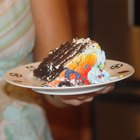
Substitutes for White Sugar in a Cake

How to Cook With Applesauce Instead of ...
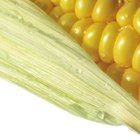
How to Substitute Light Corn Syrup in a ...

How to Substitute Agave Nectar for Sugar

What Does Adding Applesauce to Cake Mix ...
Flour Substitute for Muffins

Do You Use Granulated or Powdered Sugar ...
Can You Make Candy Using Honey Instead ...
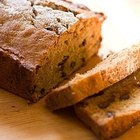
How to Bake a Cake Without Sugar
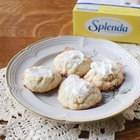
How to Make Sugar-Free Cookies With ...
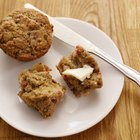
How to Bake With Erythritol
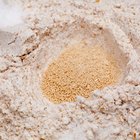
Healthy Cake Mix Substitute
How to Add Flavor to a Yellow Butter ...

Bread Flour vs. Cake Flour in Sponge ...
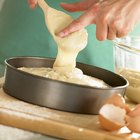
How to Make a Box Cake Mix Taste Better

Calories in Fairy Cake
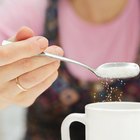
How to Substitute Splenda for Sugar
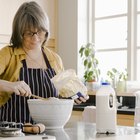
Which Artificial Sweeteners Can Be Used ...

How to Substitute Applesauce for Oil in ...
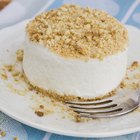
Mini Cheesecake Nutrition Information
References
Writer Bio
Andrea Cespedes is a professionally trained chef who has focused studies in nutrition. With more than 20 years of experience in the fitness industry, she coaches cycling and running and teaches Pilates and yoga. She is an American Council on Exercise-certified personal trainer, RYT-200 and has degrees from Princeton and Columbia University.